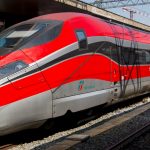The short answer?
Because we have to start somewhere.
The slightly longer answer?
There are a multitude of problems with railways in Europe, especially cross-border.
Night trains are not the only headache – regional and daytime services are also difficult across some borders, but they work better across some others. However unlike night trains where an absence of rolling stock is the clear barrier to progress, in regional and long distance cross border rail, the problems are more diverse, and the same solutions are not applicable across the board.
For some connections – like France-Germany regional services, and France-Italy long distance daytime services – a lack of rolling stock is a genuine problem.
However at other borders – like Germany-Poland or Croatia-Serbia for long distance services, rolling stock is fine, but the attitude of the railway companies each side of the border prevents services being stepped up.
In other places, and notably when it comes to regional routes – Poland-Lithuania for example – there is a data and ticketing problem. The trains run, but it is not simple or straightforward to get tickets or timetables for them.
Across some borders – Serbia-Romania for example – there are tracks but trains do not run, and at more than a dozen border crossings in Europe tracks have been torn up and would need to be replaced.
Some problems are more general in nature – new railway companies often struggle with high track access charges that make running new services prohibitively expensive, and on other routes even getting an adequate path is a problem. Approving new rolling stock to run in another country – especially bespoke trains with distributed traction – poses more headaches. And then if you can solve all of that, the passenger still has the problem of not always being able to combine trains and tickets together in a way that works in the passengers’ interests. Train travel can also be prohibitively expensive.
There is a lot to do. Let’s fix the night train rolling stock problem first as it’s finite, it’s achievable, and it is worthwhile. And if that works we can address other problems!
Photos used on this page
 Hans Permana
Hans Permana
Frecciarossa
August 5, 2018
License: Attribution-NonCommercial 2.0 Generic (CC BY-NC 2.0)
